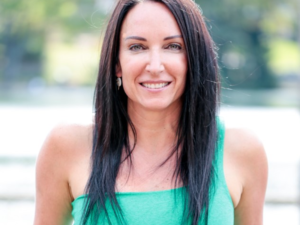Yin yoga has historically been the least celebrated form of yoga, yet it is one of the most necessary styles. In a yin practice we are seeking stillness of body, stillness of mind /thoughts and surrendering into the present moment. The lessons of yin are far more reaching than one may think at first glance.
Two of the first yogis to expand yin yoga into the mainstream were Bernie Clark and Paul Grilley in the 1990’s. They understood the importance of balancing the body with more gentle, deliberate asanas that are held for 3-5 minutes. By holding these postures, the practitioner is given the opportunity to witness bodily sensations, mind fluctuations and ultimately release held tension in the body. The theory behind yin yoga is we are going much deeper than surface muscles, bones and joints and instead reaching connective tissue. The connective tissue in the body is where, in yoga, we believe all the traumas that have occurred in life, our samskaras and difficulties manifest, and thereby store themselves. If the body holds onto these toxins, then disease will ensue. Therefore, it is important that we connect from a deeper level to encourage release of such energy.
Much of our population resides in a more “yang world”; we are over achievers, have constant to-do lists, are rushing from one activity to another and so on. Additionally, when the yogi attends a typical vinyasa class they are exerting energy in a more powerful manner versus becoming softer in intention. While yang activities and yoga are extraordinarily beneficial, to properly balance a body yin is also required. I see clients each day who are suffering from stress, anxiety, weight issues, traumas and complete disconnection from self. One of the first practices we do together is connecting with the mind/body relationship and the most tangible form of therapy is via yin yoga.
Yin yoga becomes the doorway to further understanding the mind and how thoughts, ego, stress and triggers can adversely affect the body. We invite students to embrace what are called the Three Tatvas:
Find your edge in the posture
Remain still
Spend time in the posture
Yin is a submissive practice where we acknowledge what is happening mentally and physically yet try to become the observer versus the “do-er”. When we truly find the stillness that is mentioned, we become one with ourselves and enter a more meditative state that further triggers a relaxation response and less reactive ambition. We become more accepting of our bodies, our past and our future.
As we take this practice off the mat, we find ourselves more even tempered, kinder and able to be present with each moment, each breath. This has become a very important aspect for all people to begin to explore, the idea of becoming present. Our current society has placed quite a bit of attention on constantly seeking the next best thing that will make us feel “whole”; conversely, yin yoga teaches us to be content in our lives and softer with our judgments.
As I get older and realize that my body cannot do what it once did at 23 years old—I have tried and only injured myself—I now can appreciate all that yin yoga provides to my life. It is my belief that if we all embraced a combination of yang and yin practices, we would become a healthier, more alive population. There is a time to move and there is very much a time to rest, restore and renew.
Nicole Zornitzer, ERYT 1000, yoga therapist, founder of Niyama Yoga & Wellness Shala, located in Randolph, New Jersey; Upper Lake Mohawk in Sparta, New Jersey; Roseland, New Jersey; and Delray Beach in Florida. NiyamaYogaShala.com.




